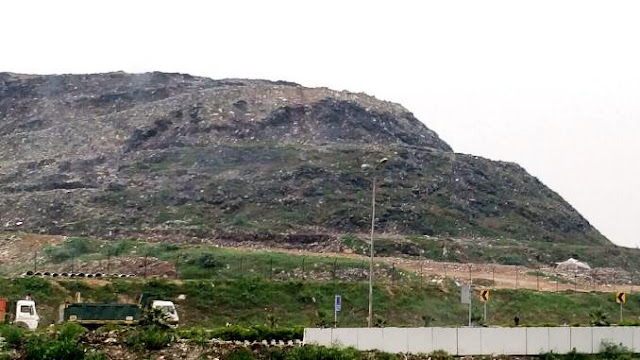Wisdom & Knowledge - Chapter 5: Throwaway Culture

In case you are wondering, the above picture is the Bhalswa Landfill of Delhi. Looks gigantic right? It is, spread across 70 acres (big enough to accommodate Wankhade Stadium, your Fav football teams ground, a basketball court, a hockey stadium and would still have enough area to open a college building) & touching a height of 65 metres (just 8 meter short of Qutab Minar) in 2019. That’s the outcome of the ongoing throwaway culture. This is a result of society’s move towards short lived or disposable items available at a lower cost rather than looking for durable items. Indian middle class households had been infamous for their approach towards buying long lived products & repair or what we call “jugaad” culture. But the last decade has witnessed a change in this with younger generations shifting to a more disposable life style, seeking cheaper alternatives rather than looking for quality and life longing products. And it’s not just about price; it’s about the social status it symbolizes. People don’t prefer to wear an outfit if they have already updated a pic in it on social media. At an average, only 30% of our wardrobe is used on a regular basis. Industrial revolution may have reduced the manufacturing cost of goods but the consumerism linked to such goods is what has given rise to this throwaway culture; people are Okay with buying cheaper alternatives as they serve the purpose for the time, irrespective of the life of the product & the conditions that go into making them. What can be done?
- Buy efficient clothing: You must look for brands which provide a better life of clothing and also the material of the clothing. A polyester shirt has more than double carbon footprint of a cotton shirt. And also these synthetic fibres are not only tough to decompose, but also release micro fibres which are a contributor to marine pollution. Buy clothes with better clothing life rather than short lived options.
- Donate: In case you have outgrown a clothing, or no longer wish to wear it; donate it rather than just throwing them away. The fashion industry produces 10% of all humanity’s carbon emissions and is the second-largest consumer of the world’s water supply. So every bit of manufactured clothing needs to be optimally used. You can even sell them at various e platforms (coutlook.com; refashioner.com to name a few). And not just clothes, electronics & other home décor related accessories are now easier to sell than ever.
- Valuate your options: Repair has been a part of our society’s DNA for years, from apparel to home accessories. But with year around ease of availability of options, we are moving to a culture of re buy rather than repair just for the comfort of it. While in some cases, a purchase is necessary; we must choose to spend judicially rather than looking for just low costing alternatives. A simple light bulb may cost just Rs 30/- but consumes way more electricity than a LED bulb of the same brightness & does way lesser harm to the environment.
- Question the SALE: Sales on various e platforms & physical outlets attract us alike to them and competitive pricing from other days sometimes leads us to buying things we don’t even actually need, mostly with the idea of “I may need it someday”. And that’s how they are structured & marketed to motivate us into buying things just because they are available today at a bargain. We must learn to question our own purchases; buy the quantity you need not the one available cheaper & may never be brought to use.
- Know your waste: Even at household levels we can easily segregate our wastes as biodegradable, non-bio degradable & wet waste. This segregation will help not only the collection authorities but also allow you to make the best of your waste.
- Paper: In case of single side used paper, use it for your rough work or other day to day activities. And if when no longer usable, it can be used to make a mini compost.
- Glass: Glass is the most recyclable material in the world, it can be melted again & again to mould in different shapes as per demand.
- Food Waste: Plan your meals and buying as per your consumption. For your fruit and vegetable peels and leftover parts they make an excellent source of nutrition for plants. Even your used tea bags & coffee grounds are excellent for plant nutrition.
- Hazardous waste: We have hazardous waste even at household level in the form of electronics & chemical waste from room fresheners or deodorants. It’s imperative that any aerosol containers be put in trash containers only after complete depletion.
And it’s not just the environmental concerns that rise with this throwaway culture but also a social outlook. Such a culture is pushing us towards a society where the materialistic things will define the development of a person. Such a society makes for a false sense of progress. And would further lead to us spending more on such disposable items, affecting an individual ability to save and invest in the future thus making us more vulnerable to economic crisis.

Great read and very informative article. Can't agree more with most of the points.
ReplyDeleteEye opener article. Well thought points and shows your love for nature. Keep going. Stay blessed.
ReplyDelete